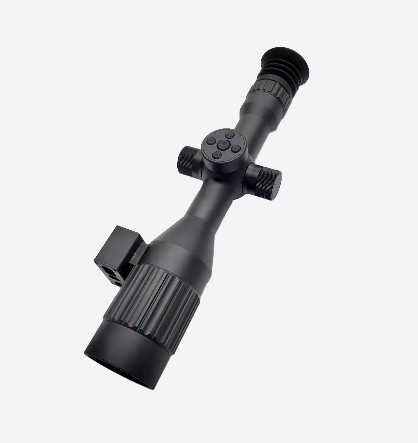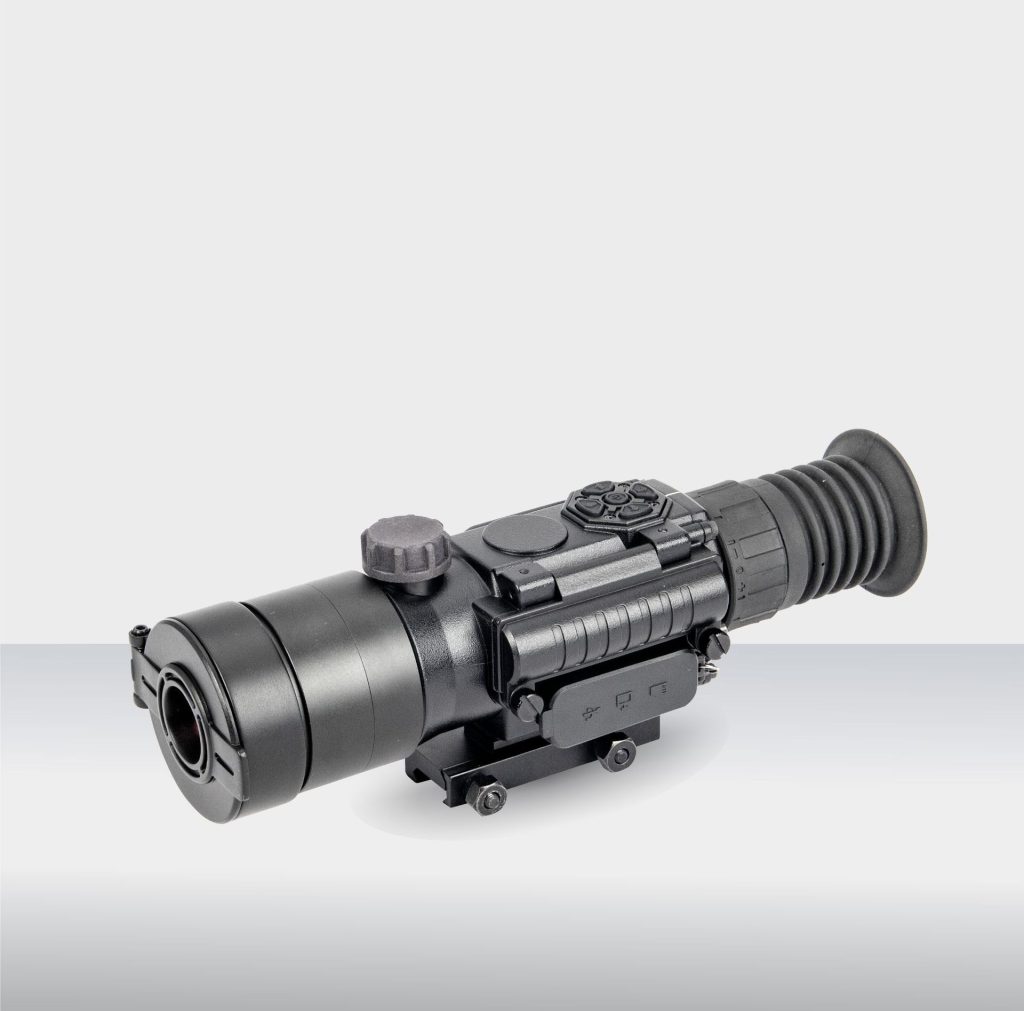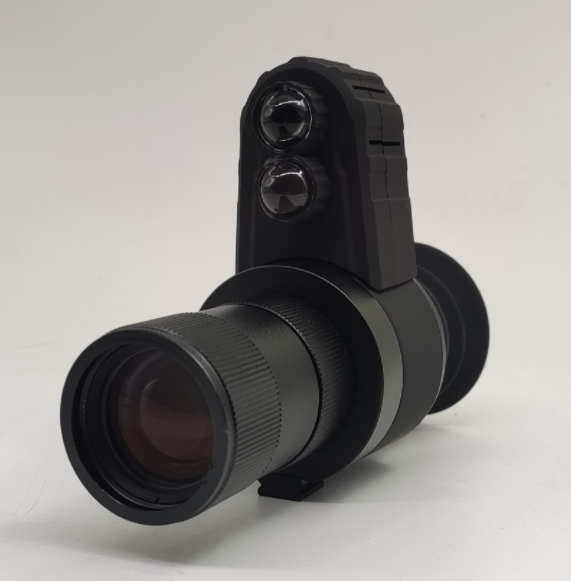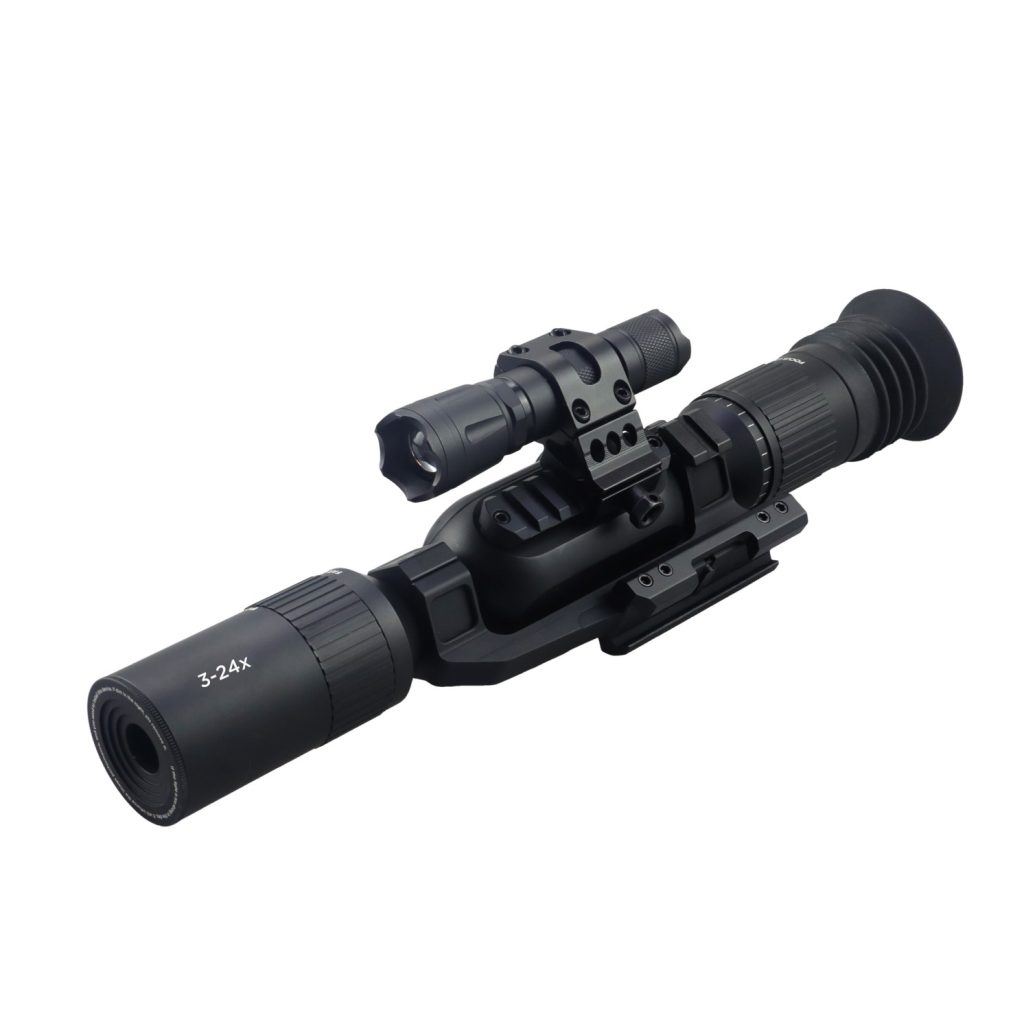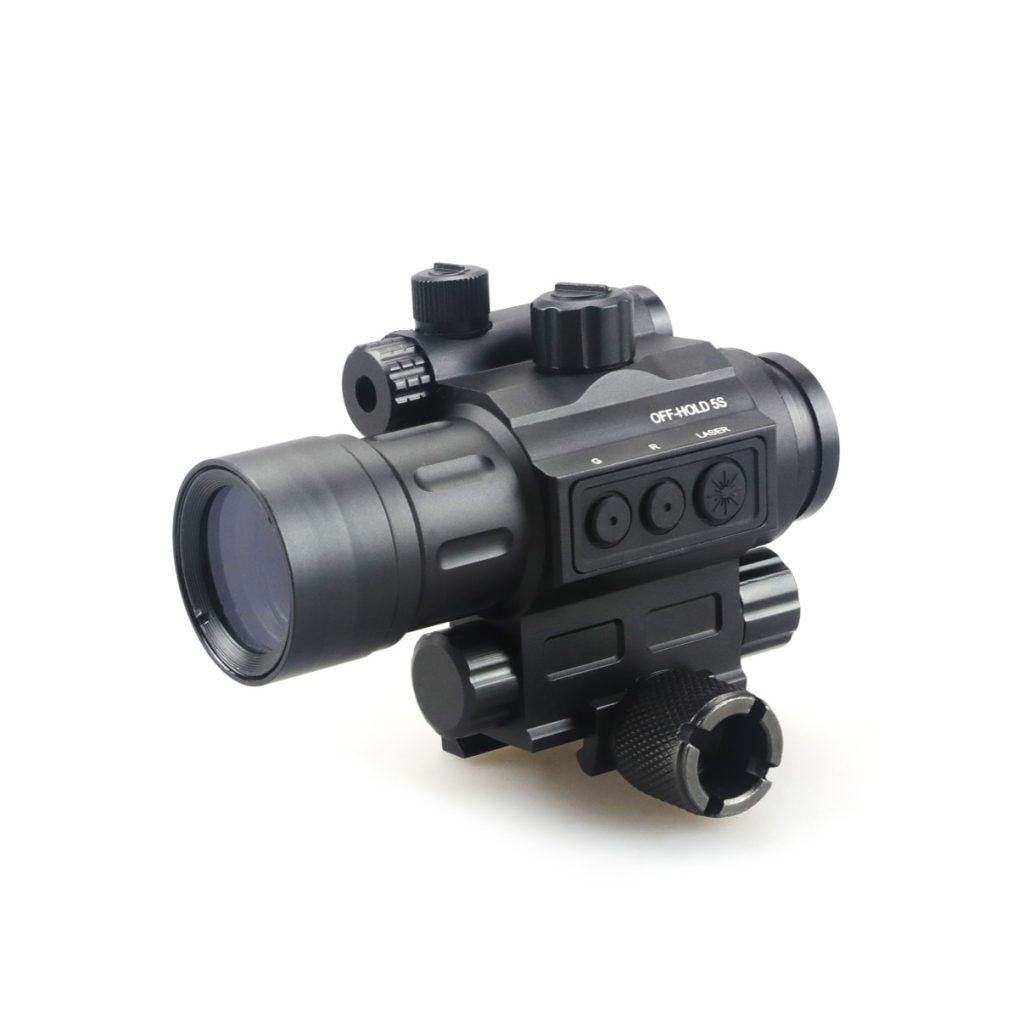While hunting or shooting at night, the ability to see vividly is required, and the naked eye does not offer the necessary clarity and depth. In particular, night vision rifle scopes are immensely helpful in this regard. Night vision scopes are crafted to enhance precision, making them essential for hunters, security experts, and tactical personnel. You might come across various different night vision rifle scopes, including the basic night vision and digital night vision scopes. The multitude of options available make the selection daunting.
In this article, we will guide you to understand what night vision rifle scopes are, how they work, the different types, and how to choose the model that best suits your needs.
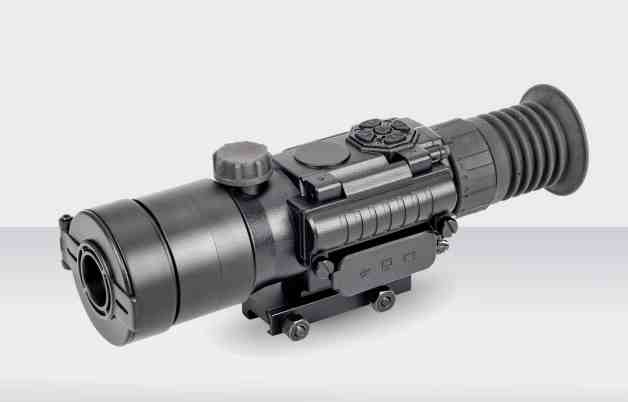
What Is a Night Vision Rifle Scope?
A night vision rifle scope is the type of scope designed to be mounted on a rifle for the purpose of seeing clearly during nighttime or in darkness. Unlike conventional rifle scopes, night vision scopes utilize either image intensification technology or a sensor that utilizes infrared light to shine on subjects thus making them visible in the dark.
Night vision scopes are particularly useful for:
- Nighttime hog and coyote hunting
- Security and law enforcement operations
- Surveillance in remote or poorly lit areas
- Tactical and military operations
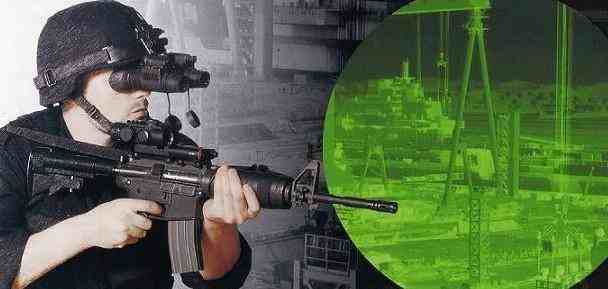
Types of Night Vision Rifle Scopes and How They Work
As with any technological advancement, night vision does not entail a singular phenomenon. Now, it can be divided broadly into two categories: classical image intensification and digital. The two scopes differ with respect to the processes that they employ.
Traditional Night Vision Rifle Scopes (Image Intensification)
People often equate the greenish night vision with conventional night vision scopes, more correctly known as I² (Image Intensification) technology. Operatively, these scopes indeed employ I² technology only to increase the existing light. For the most part, the viewing cameras used today employ the I² technology.
How it Works:
- Collection of light: The light in the form of starlight, moonlight, or its city light straggles is captured through the objective light.
- Photon to electron conversion: The captured light also known as a photon is used to strike the photocathode tube. The photocathode converts the photons into electrons.
- Electron amplification: The electrons that are collected form a micro-channel plate (MCP). The micro-channel plate is a small glass disc that has millions of tiny holes. The electrons that pass through the tiny holes are amplified. While passing through the tiny holes, the electrons strike the walls which causes them to release more electrons in a cascading form. This is what intensification of electrons is.
- Conversion from Electron to Photon: The previously mentioned steps have amplified these electrons which now strike a phosphor screen. This phosphor screen strike reverts the electrons to photons and thus a visible image is formed. The image is viewed through the eyepiece. The specific green color is chosen because the human eye is most sensitive to it, and thus more detail can be perceived.
A broad categorization into traditional scopes is done into “Generations” (Gen 1, Gen 2 and Gen 3). This division reflects the progressive changes in the scope’s refinement technology and image clarity, illumination, and reduction in distortion achieved.
To learn more about Gen 1, Gen and Gen 3 night vision, you can view our more comprehensive blog here: https://www.foreseenoptics.com/gen-1-vs-gen-2-vs-gen-3-night-vision-whats-the-real-difference
Digital Night Vision Rifle Scope
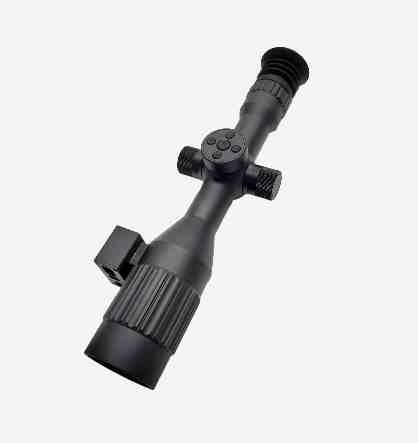
The operations of a digital night vision scope is based on the same principles as a digital camera. Rather than directly amplifying the light, it converts an optical image into a digital signal.
How it Works:
- Light Gathering: As in every traditional scope, the objective lens still collects light from the environment. Unlike in traditional scopes, digital scopes need an infrared (IR) illuminator to be effective.
- Image Sensing: An IR illuminator aids in light collection at the scope. The light is captured using charging devices and it can be a Charge-Coupled Device (CCD) or a Complementary Metal-Oxide Semiconductor (CMOS) sensor.
- Digital Processing: With respect to the sensor, it will transform the light into a digital signal and thereafter, the signal will be processed through the internal electronics. With digital processing, features such as video capture, color palettes for daytime operation, and even digital zoom are now possible while not achievable on conventional scopes.
- Display: You shall be presented with a micro-display screen, LCD and OLED being the commonly used, and through the eyepiece, you would have a view of the screen.
The processed digital image can now be displayed in different modes. It now can be shown in black and white which provides better contrast during night operations, or in full color for daytime use.
Digital vs Traditional Night Vision Rifle Scopes
| Feature | Digital | Traditional |
| Daytime Use | Yes | No |
| Light Sensitivity | Lower than Gen 3 traditional | Very high |
| Durability in Bright Light | Can withstand bright light | Can be damaged |
| Extra Features | Video, photos, rangefinding | Limited |
| Price Range | Affordable to mid-range | Mid-range to very high |
| Image Lag | Slight lag possible | Instant |
If you plan to hunt in mixed lighting conditions and want recording features, digital night vision is the better choice. But if you need the best possible light amplification for total darkness in the field, a traditional night vision rifle scope—especially Gen 3 or Gen 4—might be worth the investment.
How to Choose a Night Vision Rifle Scope?
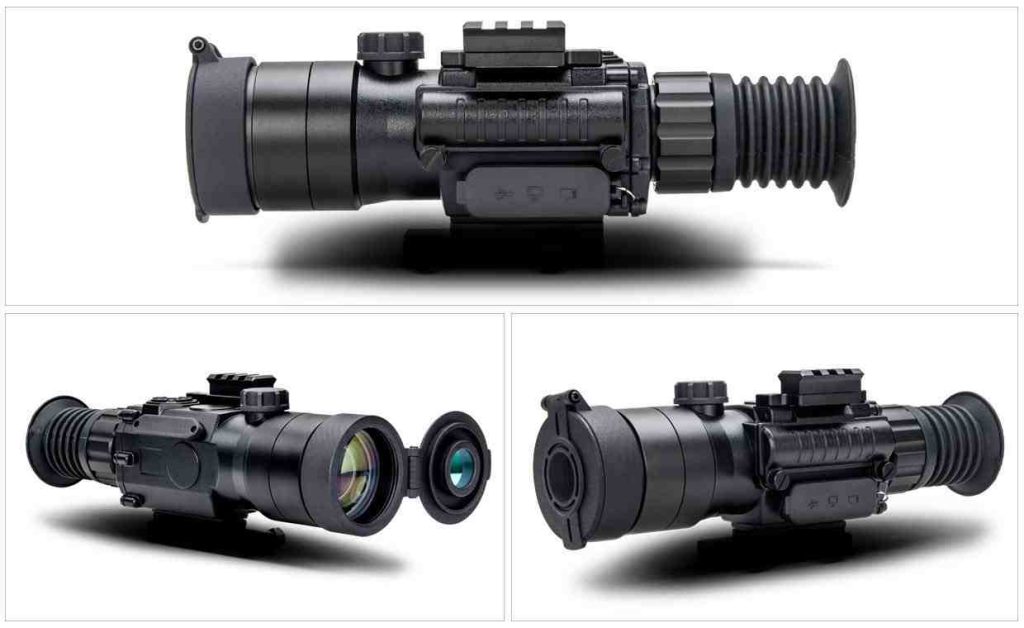
Let us now have a discussion on the different performance criteria that need to be taken into consideration.
Magnification: As noted, higher magnification does not improve performance. Increased magnification makes it more difficult to scan a region or follow moving targets. For most hunting situations such as with hogs or coyotes, a base magnification of 3x to 6x works best.
Resolution: Resolution determines how sharp and detailed your image will be.
- For digital scopes, look for at least 720p display resolution or higher.
- For traditional scopes, consider models with at least 64–72 lp/mm resolution.
Detection Range: Arguably the most important, and least understood, it is often broken down as Detection, Recognition, and Identification:
- Detection: The maximum distance at which a man sized figure can be detected.
- Recognition: It refers to the distance at which a person is able to see the type of an object, for example a person, a deer, etc.
- Identification: Refers to the distance at which a person is able to discern and see specific details of an object, for example, is the person holding a rifle?
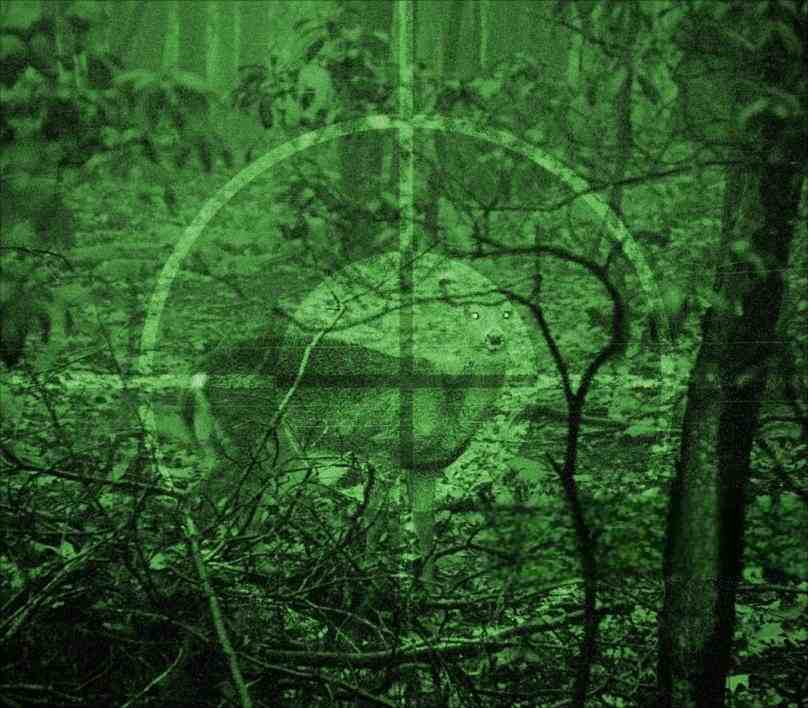
A good night vision scope should offer detection ranges from 200 to 400 yards for most hunting needs.
Battery life: once a scope’s battery is dead, the scope is practically useless. Consider the amount of time you will be spending outdoors. Traditional scopes have an advantage of around 30 to 50 hours of use. For digital scopes, 4 to 8 hours is the maximum even because of the screen and processor.
Durability and weather resistance: your scope will be subjected to external weather conditions and the shock from recoil. Look for scopes made from high strength alloys like aircraft grade aluminum. Also, check the Ingress Protection rating such as IP67 that shows the scope is dust tight and can be submerged in water. Make sure the scope can withstand the recoil from the rifle caliber you are using.
Budget considerations: Night vision devices are an expense.
- Entry-Level ($300 – $700): In this segment, we have traditional scopes of Generation 1 and basic level digital scopes. They are ideal for casual use and short-range pest control- though, range and image quality are limited.
- Mid-Range ($700 – $2,500): This segment has digital scopes with 1080p and 4K recording capabilities, supplemented with traditional scopes of Generation 2. This range is the sweet spot for the serious enthusiasts and hunters.
Additional Tips for Using and Maintaining Night Vision Rifle Scopes
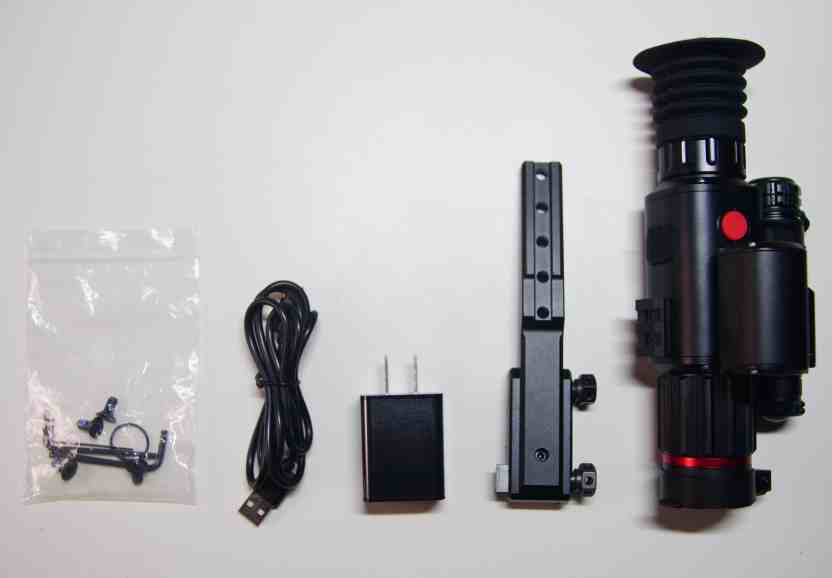
- Refrain from exposing traditional scopes to bright light to avoid aperture tube damage.
- Always place a lens cover on the scope when not in use to shield optics from dust.
- Wipe the lens with a microfiber cloth to preserve clarity.
- Store in a cool and dry place to prevent moisture damage.
- For digital scopes, keep spare batteries or digital power packs in your tactical gear.
Conduct dry drills with the scope under various light conditions prior to the field.
Wrapping Up
Picking a night vision rifle scope is always a trade-off between performance, features, and budget. A good traditional (Gen 2+) scope will always outperform raw image quality and seeing in very low light conditions. You would do better with a digital scope if you value multi-purpose use, daytime utility, and added features such as video recording of the scope at a more budget-friendly price.
Night vision rifle scopes add great value to low-light shooting in terms of accuracy and confidence as long as the scopes are properly selected and maintained. A quality night vision scope truly turns night into day in terms of vision.

